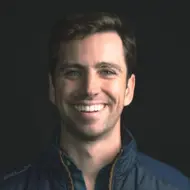Fifteen Million Sign-ups in 5 Days: Bridging Technology’s Opportunity Gap
With recent IPOs (Twitter), acquisitions (Google’s purchase of Nest for $3.2B in cash), and astounding offers (Facebook’s attempt to buy Snapchat for $3B), our business headlines tell a story of incredible opportunity in the world of technology. Products envisioned in dorm rooms have been adopted by billions of people, changed the way we live our

Bradley Heinz

With recent IPOs (Twitter), acquisitions (Google’s purchase of Nest for $3.2B in cash), and astounding offers (Facebook’s attempt to buy Snapchat for $3B), our business headlines tell a story of incredible opportunity in the world of technology. Products envisioned in dorm rooms have been adopted by billions of people, changed the way we live our lives, and generated incredible wealth. Hadi Partovi, founder of Code.org, believes that despite the headlines, this is an opportunity we are failing to seize.
Code.org estimates that by 2020 there will be one million vacant computing jobs in the U.S. alone. By some projections, that means one trillion (yes, with a T) dollars of lost, unseized salaries. With millions of Americans under- or unemployed, it seems we’re under-prepared for the realities of our new high tech economy.
You don’t need to take my word for it. Just ask Mark Zuckerberg:
“Our policy is literally to hire as many talented engineers as we can find. The whole limit in the system is that there just aren’t enough people who are trained and have these skills today.”Hadi founded Code.org out of a conviction that modern educational systems need to include computer science as a core component of their curricula. “Our population needs to be ready for the 21st century. We should be able to add millions of jobs and trillions of dollars to the economy, as well as help reduce the inequality gap by allowing underprivileged kids to have a pathway to the best jobs in the country.”
Despite leading to the most in-demand jobs in the market, less than 2.4% of college students graduate with a degree in computer science. The problem starts early. STEM (science, technology, engineering, math) fundamentals are introduced in the first grade and taught through high school graduation, but for most schools, computer science is never included at all.
The Campaign
That’s what Hadi and Code.org are out to change. They’re fighting to change policy at the state and national levels, and their recent Hour of Code campaign aimed to introduce millions of students across the country to computer science. To say the campaign had a phenomenal turnout rate is an understatement.
They signed up 15 million users. In five days.
To put that in context, it took Facebook 3 years to acquire that many users.
So how did they do it? Getting dozens of celebrities on board certainly helped, but Hadi says A/B testing is the most important tool for any growth hacker. Let’s look at some tests they ran.
The Test
Code.org wanted to optimize the Hour of Code sign-up page to inspire more students and teachers to register.
First, they tested their headline. The original page said, “Welcome to the 21st Century. Help us introduce 10 million students to computer science. All it takes is one Hour of Code.” The team hypothesized that changing this messaging would drive more sign-ups. To test this hypothesis, they experimented with several different variations of messaging – each highlighting a different facet of the campaign.
They also tested the sign-up page CTA – “Learn More” versus “Join Us”. The hypothesis in this case was that creating a sense of community around the movement would encourage greater participation.
The Results
The following variation lead to a staggering 29% increase in signups for the Hour of Code:
The “Join Us” button outperformed the original, as did the messaging above the button emphasizing how computer science is a foundation of modern education.
Roxanne Emadi, who manages website optimization at Code.org, credits this experiment for generating about 8 million student sign-ups to the campaign.
“With Optimizely, we were not only able to introduce nearly 1 in 4 U.S. students to computer science, but we were able to launch the fastest growing web-service ever last week, which reached 15 million users in 5 days, faster than Facebook, Twitter, Instagram and Tumblr, combined,” says Roxanne.
Optimizing the Future
Hadi taught himself how to code on one of the first PCs as he and his family laid low during the Iranian revolution. Later, as a member of the Microsoft team, he helped bring Internet Explorer to the world. If Code.org succeeds, children won’t have to teach themselves how to code, but will grow up equipped with the skills necessary to succeed in today’s economy.
“Whether you’re trying to make a lot of money or you just want to change the world, computer programming is an incredibly empowering skill to learn.” —Hadi Partovi, Founder, Code.org